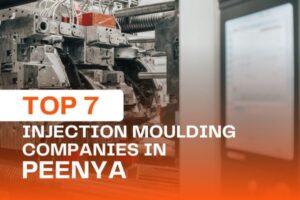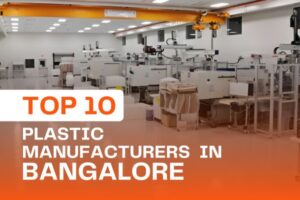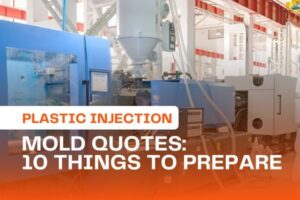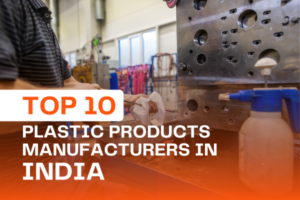Crafting Perfection: The Crucial Role of Cleanroom Injection Molding in Plastic Injection Molding
Plastic injection molding is a widely used manufacturing process for producing a wide range of plastic parts and products. From automotive components to medical devices and consumer goods, plastic injection molding plays a crucial role in our everyday lives. However, what many people may not realize is that this process often takes place in a cleanroom environment. In this guide, we will explore the reasons why plastic injection molding requires a cleanroom, the unique challenges associated with cleanrooms for this process, and how to design a safe and effective plastic injection molding cleanroom.
What is Clean Room Injection Molding?
Cleanroom injection molding refers to the practice of performing plastic injection molding in a controlled and highly clean environment called a cleanroom. A cleanroom is a specialized area designed to maintain extremely low levels of environmental contaminants, including dust, particles, microorganisms, and other impurities, to ensure the production of high-quality and contamination-free plastic parts. Cleanroom injection molding is especially crucial in industries where product quality, precision, and cleanliness standards are of paramount importance, such as medical device manufacturing, aerospace, and electronics.
In cleanroom injection molding, the following key aspects are typically controlled:
Air Quality: Cleanrooms have sophisticated heating, ventilation, and air conditioning (HVAC) systems equipped with high-efficiency particulate air (HEPA) or ultra-low penetration air (ULPA) filters. These filters remove particles and maintain the desired air quality, often meeting specific cleanliness classifications like ISO Class 5 or ISO Class 7.
Temperature and Humidity: Cleanrooms maintain strict control over temperature and humidity levels to prevent material degradation and ensure consistent manufacturing conditions.
Gowning and Access Protocols: Personnel working in cleanrooms are required to follow specific gowning procedures, which may include wearing special garments, shoe covers, and head coverings to minimize the introduction of contaminants from outside.
Equipment and Material Handling: Injection molding machines, molds, and other equipment within the cleanroom are selected, designed, and maintained to minimize contamination risks. Material handling and storage procedures are carefully controlled to prevent contamination of raw materials.
Personal Training: Cleanroom operators receive specialized training in cleanroom protocols, hygiene, and safety to ensure that they do not compromise the cleanliness of the environment.
Cleanroom injection molding is a critical practice in industries where product quality, safety, and regulatory compliance are of utmost importance. It helps prevent defects, contamination, and ensures that the plastic parts produced meet high cleanliness and quality standards.
Unique Challenges for Plastic Injection Molding Cleanrooms
Cleanrooms for plastic injection molding come with their own set of unique challenges and considerations:
1. Air Quality Control: Maintaining the required level of air quality in a plastic injection molding cleanroom is critical. It involves controlling particle count, temperature, humidity, and airflow to prevent contamination.
2. Electrostatic Discharge (ESD): ESD can be detrimental to sensitive electronic components often used in injection molding equipment. Cleanrooms must be designed to mitigate ESD risks to avoid damage to machinery and components.
3. Material Handling: Proper material handling and storage within the cleanroom are essential to prevent contamination and ensure the integrity of the plastic material.
4. Operator Training: Cleanroom personnel require specialized training in cleanroom protocols, gowning, and hygiene to maintain the cleanliness of the environment.
How to Design a Safe & Effective Plastic Injection Molding Cleanroom
Designing a cleanroom for plastic injection molding is a complex process that requires careful planning and adherence to industry standards. Here are some key steps to consider:
1. Define Cleanroom Classification: The level of cleanliness required depends on the specific product and industry standards. Classifications, such as ISO Class 5 or ISO Class 7, dictate the maximum allowable particle counts in the cleanroom.
2. Layout and Equipment: Optimize the cleanroom layout to minimize contamination risks. Install appropriate injection molding machines, auxiliary equipment, and material handling systems.
3. HVAC Systems: Implement a robust HVAC system that can filter and maintain the required temperature and humidity levels. Consider HEPA and ULPA filters to achieve the necessary air quality.
4. Gowning and Access Control: Develop strict gowning procedures for personnel entering the cleanroom. Use air showers and pass-through chambers to maintain cleanliness.
5. Monitoring and Maintenance: Install monitoring systems to continuously track air quality, temperature, humidity, and other critical parameters. Establish regular maintenance schedules to ensure all equipment functions correctly.
6. Training and Documentation: Ensure that cleanroom staff receives proper training in gowning, hygiene, and cleanroom protocols. Maintain comprehensive documentation to track cleanroom performance and compliance.
Work with the Plastic Injection Molding Cleanroom Experts at Tru Mould
Designing and operating a cleanroom for plastic injection molding is a complex undertaking that requires expertise and experience. Tru Mould, a recognized leader in cleanroom solutions, offers a range of services to meet your cleanroom needs. Our team of experts can assist you in designing, building, and maintaining a cleanroom environment that meets your specific requirements and industry standards.
In conclusion, the use of cleanrooms injection molding in plastic injection molding is essential for maintaining product quality, meeting regulatory standards, and preventing defects. Cleanrooms play a critical role in ensuring that the plastic parts produced through injection molding are of the highest quality and free from contamination. By working with experienced cleanroom professionals like those at Tru Mould, you can be confident in the cleanliness and effectiveness of your plastic injection molding process.




